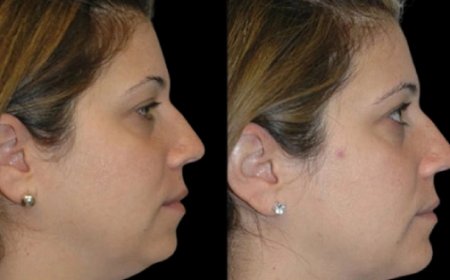Long-Term Use of Raloxifene: Is It Safe and Effective?
Raloxifene’s anti-estrogen effects in breast tissue help reduce the risk of hormone-receptor-positive invasive breast cancer.

Buy Raloxifene is a selective estrogen receptor modulator (SERM) primarily used to treat and prevent osteoporosis in postmenopausal women and to reduce the risk of invasive breast cancer in women at high risk. Its ability to mimic estrogen in some tissues (such as bone) and block it in others (like the breast and uterus) makes it a unique and valuable therapy. But when it comes to long-term use, many women and healthcare professionals wonder: Is raloxifene safe and effective when taken over several years?
In this article, well examine the long-term safety profile, efficacy, and clinical insights related to extended raloxifene use, as well as what patients should know about continued therapy.
What Is Raloxifene Used For?
Raloxifene is FDA-approved for two main purposes:
-
Preventing and treating osteoporosis in postmenopausal women by increasing bone mineral density (BMD) and reducing the risk of vertebral fractures.
-
Reducing the risk of invasive breast cancer in women who are postmenopausal and have osteoporosis or are at high risk for breast cancer.
It is commonly marketed under the brand name Evista.
How Long Is Raloxifene Typically Used?
Unlike some medications that are prescribed for short-term relief, raloxifene is often recommended as a long-term therapy. Treatment may continue for 5 to 10 years, especially in women who remain at risk of osteoporosis-related fractures or hormone-positive breast cancer.
Effectiveness of Raloxifene Over the Long Term
1. Bone Health and Osteoporosis Prevention
Several long-term studies confirm raloxifenes ability to increase bone mineral density (BMD) and reduce the risk of spinal fractures. In a major clinical trial (the MORE study Multiple Outcomes of Raloxifene Evaluation), postmenopausal women who took raloxifene for up to 4 years showed:
-
A 3050% reduction in vertebral fracture risk
-
Sustained increases in bone density in the lumbar spine and hip
Importantly, while it reduces spinal fractures, raloxifene does not significantly lower the risk of non-vertebral fractures, such as hip fractures.
2. Breast Cancer Prevention
Raloxifenes anti-estrogen effects in breast tissue help reduce the risk of hormone-receptor-positive invasive breast cancer. The STAR trial (Study of Tamoxifen and Raloxifene) showed that raloxifene is as effective as tamoxifen in lowering breast cancer risk, but with a better safety profile.
Women taking raloxifene for 5 years or more experienced:
-
A reduced incidence of breast cancer
-
Fewer cases of endometrial cancer and blood clots compared to tamoxifen
This makes raloxifene a preferred choice for long-term cancer risk reduction in postmenopausal women.
Safety of Long-Term Raloxifene Use
Like all medications, raloxifene has potential side effects, and its long-term safety profile should be carefully considered.
Common Side Effects:
-
Hot flashes
-
Leg cramps
-
Joint pain
-
Flu-like symptoms
These are usually mild to moderate and tend to lessen over time.
Serious but Rare Risks:
-
Blood Clots (Venous Thromboembolism)
-
Raloxifene increases the risk of deep vein thrombosis (DVT) and pulmonary embolism.
-
The risk is similar to that of estrogen therapy and requires caution, especially in women with a history of clotting disorders.
-
-
Stroke Risk in High-Risk Women
-
In women with existing coronary heart disease or multiple risk factors, raloxifene may slightly increase the risk of fatal stroke.
-
It is generally not recommended for women with a history of stroke, heart attack, or high cardiovascular risk.
-
-
Endometrial Health
-
Unlike estrogen, raloxifene does not stimulate the uterine lining.
-
This results in no increased risk of endometrial hyperplasia or cancer, which is a significant advantage over other hormone therapies.
-
Long-Term Monitoring
For women on raloxifene for extended periods, healthcare providers may recommend:
-
Bone density scans every 12 years
-
Routine breast cancer screenings
-
Monitoring for signs of blood clots, especially after surgery, prolonged immobility, or during travel
Raloxifene vs Other Long-Term Therapies
| Medication | Prevents Fractures | Reduces Breast Cancer Risk | Risk of Uterine Cancer | Risk of Blood Clots |
|---|---|---|---|---|
| Raloxifene | Yes (vertebral) | Yes | No | Yes |
| Tamoxifen | Yes (vertebral) | Yes | Yes | Yes |
| Estrogen Therapy | Yes (varies) | No | Yes | Yes |
| Bisphosphonates | Yes (hip, spine) | No | No | No |
Raloxifene stands out for its dual actionpreserving bone density and lowering breast cancer riskwhile avoiding the uterine and breast stimulation seen with estrogen and tamoxifen.
Who Should Consider Long-Term Raloxifene?
Raloxifene is ideal for:
-
Postmenopausal women with osteoporosis or low bone mass
-
Women with a high risk of breast cancer
-
Women who cannot or prefer not to take estrogen therapy
-
Those without a personal or family history of stroke or blood clots
Its not suitable for premenopausal women, pregnant women, or individuals with active or past venous thromboembolism.
Patient Experience and Adherence
Studies show that women who tolerate raloxifene well are likely to remain adherent to therapy for many years, especially when they understand its long-term benefits. However, hot flashes and leg cramps may affect compliance in some.
Physician counseling, regular monitoring, and awareness of potential side effects help improve adherence and long-term success.
Conclusion: Is Long-Term Raloxifene Use Safe and Effective?
Yes, raloxifene has been proven to be both safe and effective for long-term use in most postmenopausal women when appropriately prescribed. It offers two important benefits:
-
Bone protection to reduce vertebral fracture risk
-
Breast cancer prevention without stimulating the uterus
While there is a small but important risk of blood clots and stroke, especially in women with existing cardiovascular disease, the overall benefit-risk balance is favorable in properly selected patients.
If youre considering raloxifene or currently taking it, talk to your healthcare provider about:
-
Your individual risk profile
-
How long you may need treatment
-
Any necessary screenings or blood tests during therapy
With the right guidance and monitoring, raloxifene can be a powerful tool for protecting your long-term health during and after menopause.














































